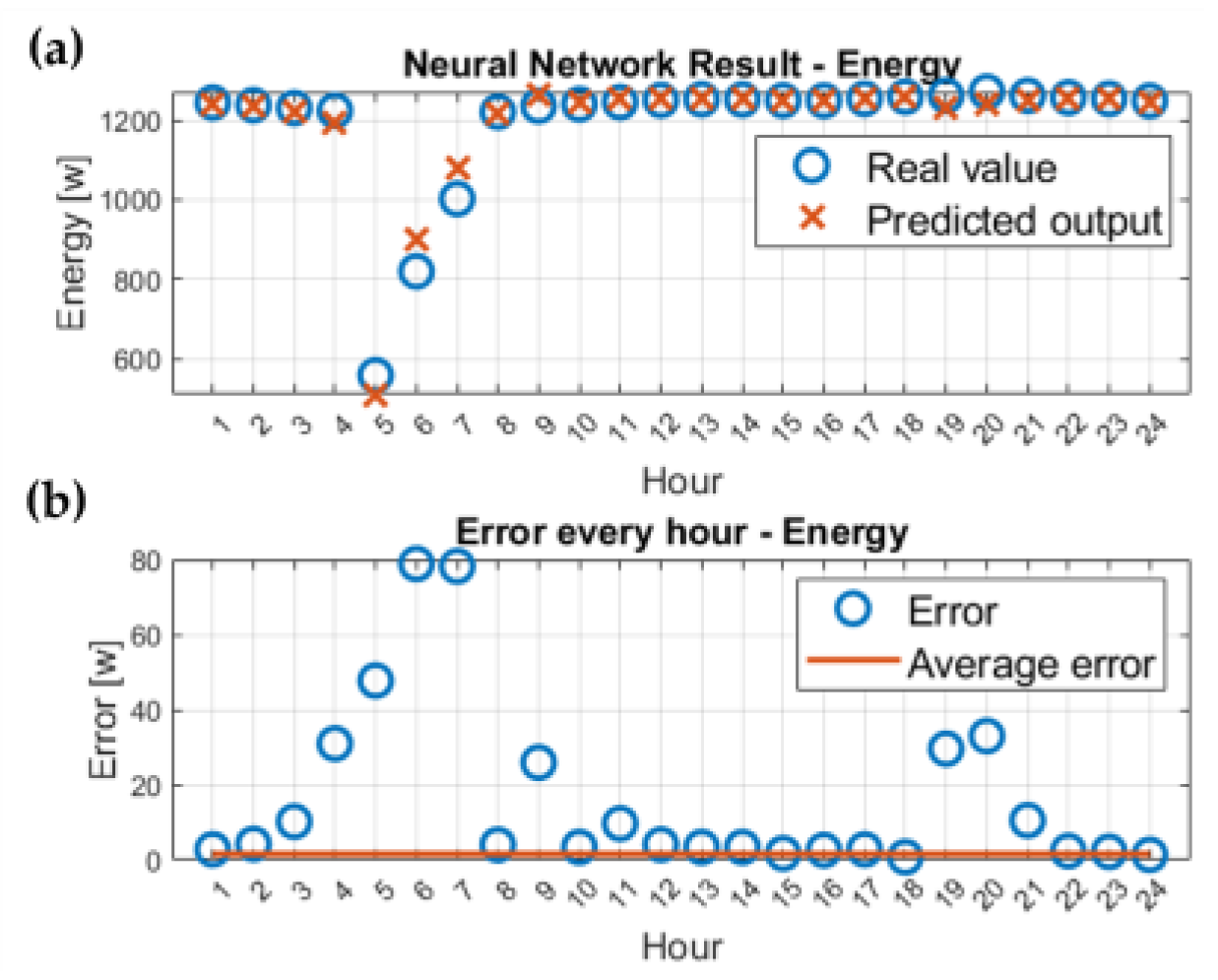Application of Feedforward Artificial Neural Networks to Predict the Hydraulic State of a Water Distribution Network †
Abstract
:1. Introduction
2. Methodology
2.1. Creating the Database
2.2. Development of the Artificial Neural Network
3. Results
3.1. Energy Consumption Prediction
3.2. Predicting Tank Levels
3.3. Prediction of Node Pressures and Minimum Pressure
4. Conclusions
Author Contributions
Funding
Institutional Review Board Statement
Informed Consent Statement
Data Availability Statement
Conflicts of Interest
References
- Balekelayi, N.; Tesfamariam, S. Optimization techniques used in design and operations of water distribution networks: A review and comparative study. Sustain. Resilient Infrastruct. 2017, 2, 153–168. [Google Scholar] [CrossRef]
- Mala-Jetmarova, H.; Sultanova, N.; Savic, D. Lost in optimisation of water distribution systems? A literature review of system operation. Environ. Model. Softw. 2017, 93, 209–254. [Google Scholar] [CrossRef]
- Martínez-Solano, F.J.; Iglesias-Rey, P.L.; Mora-Meliá, D.; Fuertes-Miquel, V.S. Exact skeletonization method in water distribution systems for hydraulic and quality models. Procedia Eng. 2017, 186, 286–293. [Google Scholar] [CrossRef]
- Garzón, A.; Kapelan, Z.; Langeveld, J.; Taormina, R. Machine learning-based surrogate modeling for urban water networks: Review and future research directions. Water Resour. Res. 2022, 58, e2021WR031808. [Google Scholar] [CrossRef]



Disclaimer/Publisher’s Note: The statements, opinions and data contained in all publications are solely those of the individual author(s) and contributor(s) and not of MDPI and/or the editor(s). MDPI and/or the editor(s) disclaim responsibility for any injury to people or property resulting from any ideas, methods, instructions or products referred to in the content. |
© 2024 by the authors. Licensee MDPI, Basel, Switzerland. This article is an open access article distributed under the terms and conditions of the Creative Commons Attribution (CC BY) license (https://creativecommons.org/licenses/by/4.0/).
Share and Cite
Evangelista, L.; Móller, D.; Brentan, B.; Meirelles, G. Application of Feedforward Artificial Neural Networks to Predict the Hydraulic State of a Water Distribution Network. Eng. Proc. 2024, 69, 49. https://doi.org/10.3390/engproc2024069049
Evangelista L, Móller D, Brentan B, Meirelles G. Application of Feedforward Artificial Neural Networks to Predict the Hydraulic State of a Water Distribution Network. Engineering Proceedings. 2024; 69(1):49. https://doi.org/10.3390/engproc2024069049
Chicago/Turabian StyleEvangelista, Leandro, Débora Móller, Bruno Brentan, and Gustavo Meirelles. 2024. "Application of Feedforward Artificial Neural Networks to Predict the Hydraulic State of a Water Distribution Network" Engineering Proceedings 69, no. 1: 49. https://doi.org/10.3390/engproc2024069049







